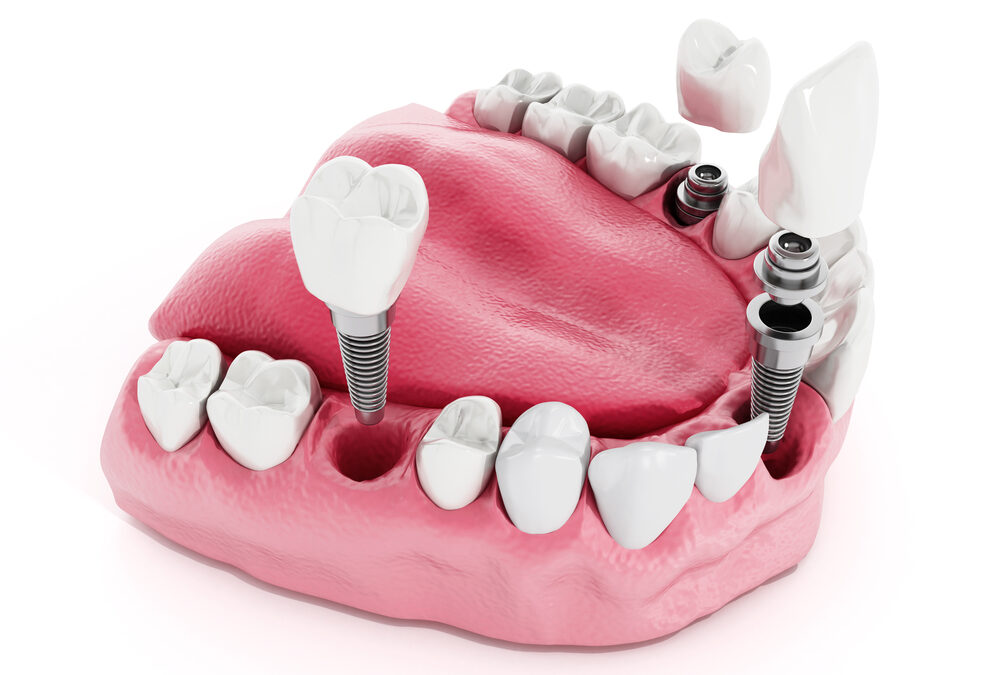Dental implants have transformed modern dentistry by offering a permanent and natural-looking solution for missing teeth. Whether you’ve opted for a single implant or a full-arch restoration like All-on-4 Plus, understanding the recovery process and proper aftercare is essential for successful healing and long-term implant health. This article explores what you can expect during the recovery phase and provides essential tips for caring for your implants.
The Dental Implant Recovery Timeline
The recovery journey after dental implant surgery typically involves multiple stages, from initial healing to full osseointegration (the process where the implant fuses with the jawbone).
-
The First 24–48 Hours: Immediate Post-Surgery Care
After the dental implant procedure, it is normal to experience some discomfort, swelling, and minor bleeding. Here’s what you can expect:
– Swelling and Bruising: Swelling around the implant site is common and may peak within 48 hours. Applying a cold compress can help reduce inflammation.
– Bleeding: Mild bleeding or oozing is typical. Bite gently on gauze to control it, and avoid vigorous rinsing.
– Pain Management: Your dentist will prescribe pain medication or recommend over-the-counter pain relievers.
Essential Tips:
- Rest and avoid strenuous activities for the first 24–48 hours.
- Keep your head elevated when sleeping to minimize swelling.
- Stick to soft foods and avoid hot beverages during this period.
-
The First Week: Initial Healing
During the first week, the implant site begins to heal, but it remains sensitive. It is important to follow your dentist’s instructions carefully to prevent complications.
– Dietary Adjustments: Stick to a soft diet, including yogurt, smoothies, and mashed vegetables. Avoid crunchy, hard, or sticky foods that can dislodge blood clots or irritate the implant site.
– Oral Hygiene: Gently rinse with warm salt water or an antibacterial mouthwash to keep the area clean. Avoid brushing directly over the implant site for the first few days.
– Managing Discomfort: Swelling and mild discomfort may persist but should gradually subside.
Essential Tips:
- Maintain good oral hygiene while being gentle around the implant area.
- Avoid smoking or using tobacco products, as they can hinder healing.
- Attend follow-up appointments to monitor your recovery progress.
-
The Next 2–4 Weeks: Osseointegration Phase
Osseointegration is the crucial stage where the dental implant fuses with your jawbone. This process typically takes several weeks to months, but most patients can resume normal activities within two weeks.
– Healing Progress: During this period, you may still experience mild tenderness, but the swelling and pain should diminish.
– Diet Expansion: You can slowly reintroduce firmer foods, but continue avoiding extremely hard or sticky items.
– Oral Care Routine: Gently brush around the implant area with a soft-bristle toothbrush and use non-alcoholic mouthwash.
Essential Tips:
- Be patient—osseointegration is a gradual process.
- Use implant-specific oral care products, such as gentle floss or interdental brushes.
- Avoid habits like chewing on ice or using your teeth to open packages.
Long-Term Aftercare for Dental Implants
Once your implants have fully integrated with your jawbone, maintaining them requires consistent care and regular dental check-ups. Here’s how to ensure their longevity:
Daily Oral Hygiene Practices
– Brush your implants twice daily using a soft-bristled toothbrush.
– Floss around the implants and use water flossers to clean hard-to-reach areas.
– Avoid abrasive toothpaste that can damage the implant’s surface.
Regular Dental Visits
– Schedule regular check-ups (every 6 months) for professional cleanings and to monitor implant stability.
– Your dentist will check for any signs of inflammation or implant-related complications.
Lifestyle and Dietary Considerations
– Avoid chewing on hard objects (ice, pens) to prevent damaging the implant.
– Quit smoking, as it can increase the risk of implant failure.
– Maintain a balanced diet rich in vitamins and minerals to support oral health.
All-on-4 Plus: What Makes It Unique?
For patients seeking full-arch restoration, All-on-4 Plus dental implants offer a groundbreaking solution. Unlike traditional implants, this technique uses only four strategically placed implants to support an entire arch of teeth, providing faster recovery and improved stability.
– Fewer Implants, Faster Healing: With only four implants, the surgical procedure is less invasive, leading to reduced recovery time.
– Immediate Function: Many patients can receive temporary teeth on the same day, improving functionality and aesthetics almost instantly.
– Long-Term Durability: The All-on-4 Plus system offers exceptional stability, reducing the risk of implant shifting or loosening over time.
Essential Tips for Caring for Your All-on-4 Plus Implants:
Use a water flosser to clean beneath the prosthetic arch.
Maintain regular dental visits to ensure proper fit and stability.
Follow dietary guidelines provided by your dentist to protect the implants during healing.
Potential Complications and When to Seek Help
While dental implant procedures have a high success rate, it’s important to recognize signs of potential issues:
– Prolonged Swelling or Pain: If pain or swelling worsens after a few days, contact your dentist.
– Infection Signs: Pus, foul odor, or persistent bleeding could indicate an infection.
– Loose Implant: If your implant feels loose or unstable, seek immediate dental attention.
Recovering from dental implant surgery requires patience and consistent aftercare. Whether you’ve received a single implant or opted for a full-arch restoration with All-on-4 Plus, following essential tips for caring for your implants is vital for long-term success. By maintaining proper oral hygiene, attending regular dental check-ups, and being mindful of your lifestyle habits, you can enjoy a healthy, confident smile for years to come.



